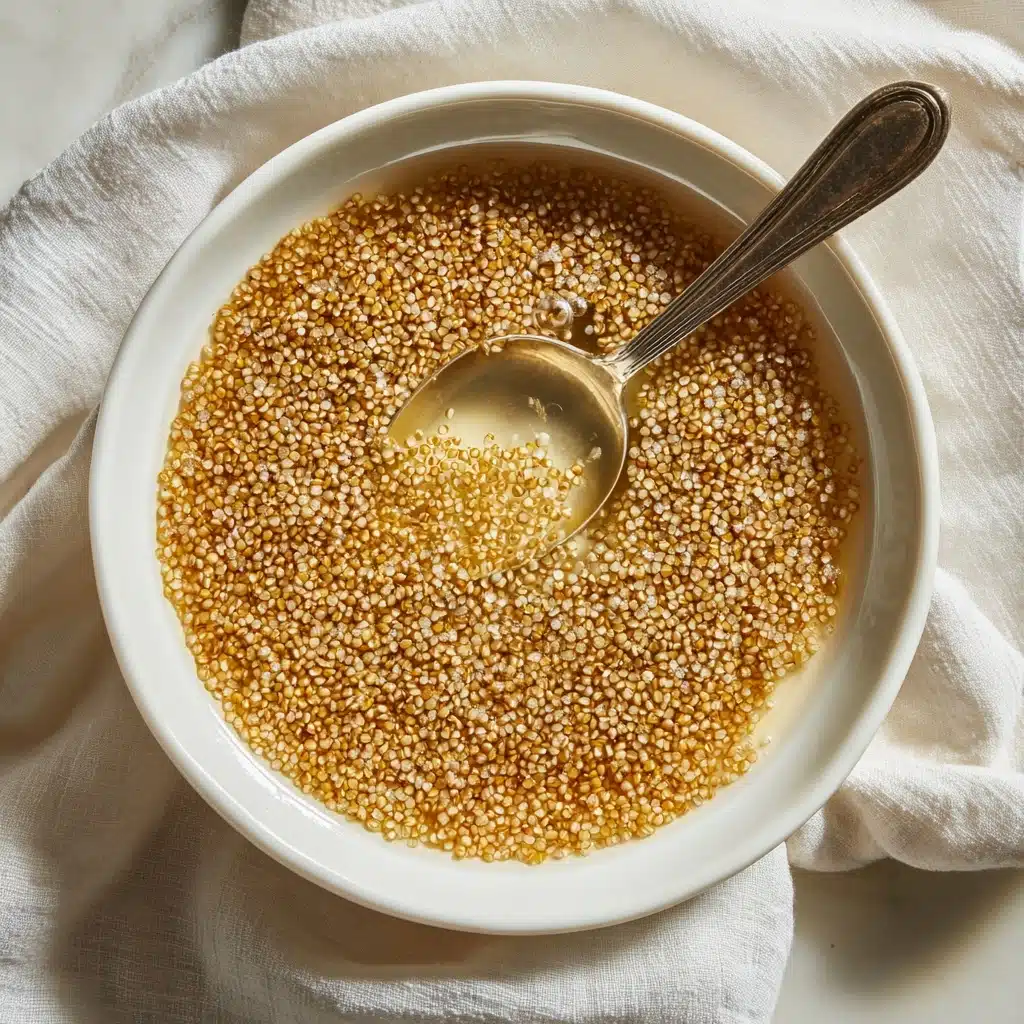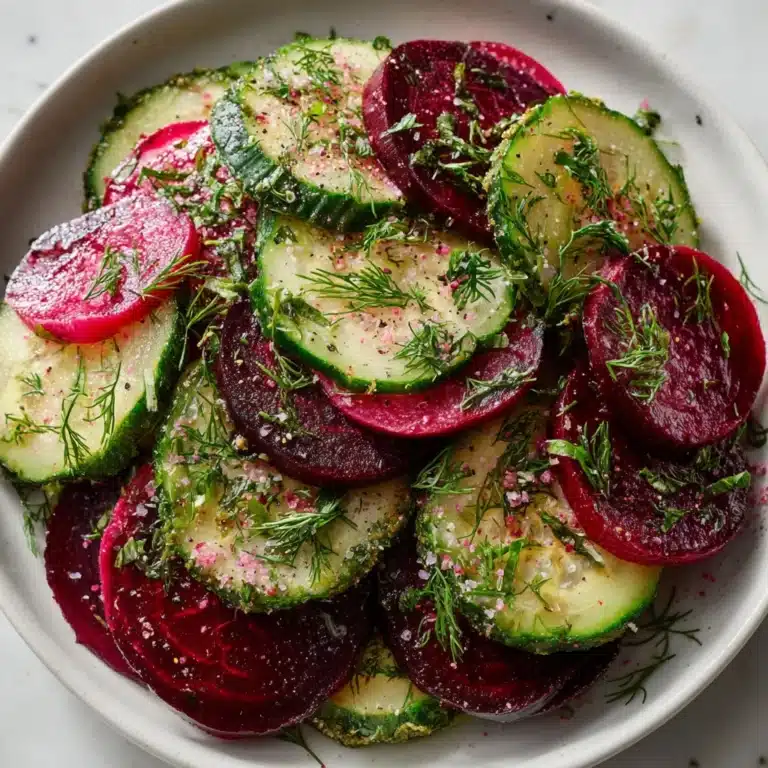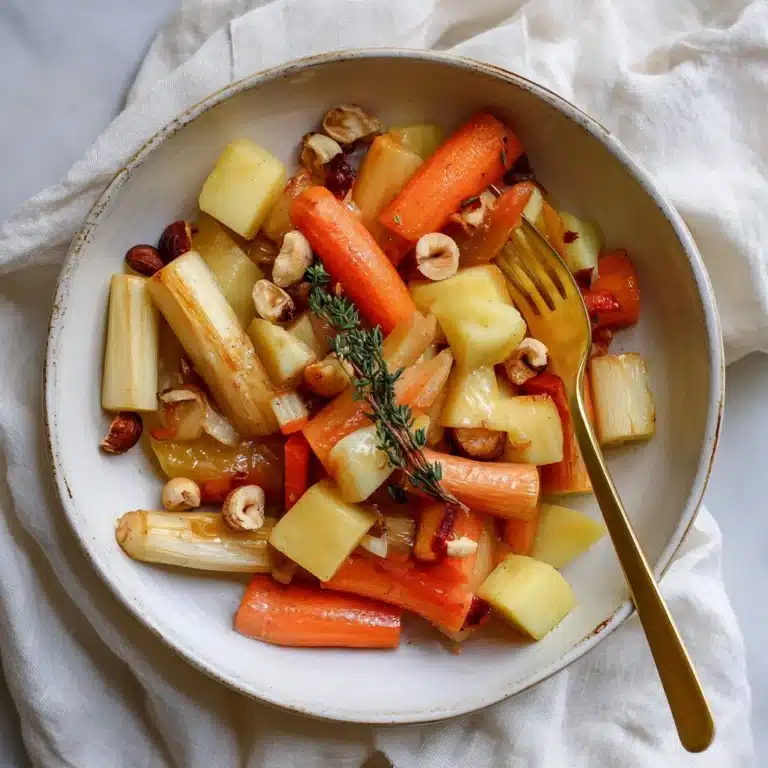Unlock a new level of nutrition and flavor in your kitchen with soaking grains! This simple yet transformative process not only makes your favorite grains easier to digest, but also brings out their natural taste and helps your body absorb more nutrients. Whether you’re reaching for oats, quinoa, rice, or wheat berries, this easy method is about making wholesome eating genuinely doable and delicious. Say goodbye to dense, tough grains and hello to light, fluffy, nourishing creations every time!
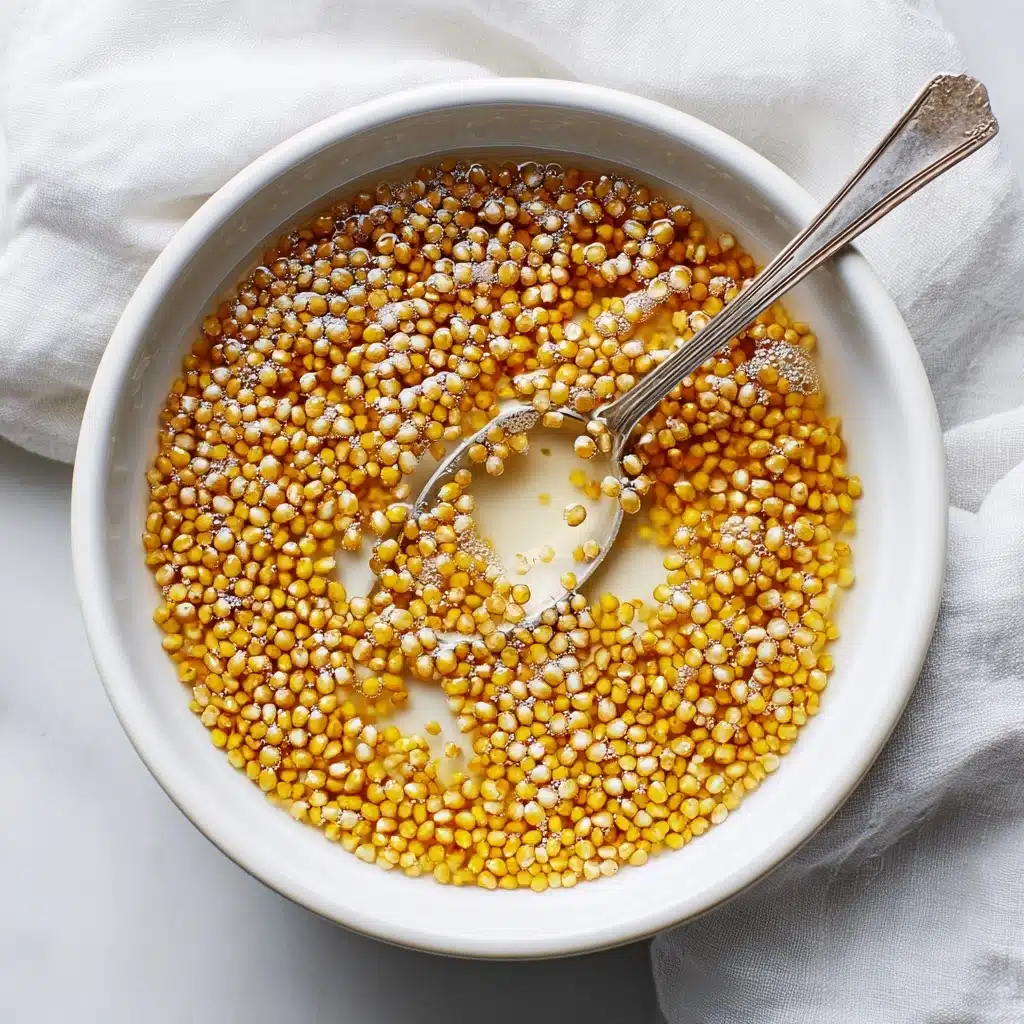
Ingredients You’ll Need
-
Whole Grains:
- 2 cups whole grains (such as oats, quinoa, rice, or wheat berries)
Filtered Water:
- 4 cups filtered water
Acidic Medium:
- 2 tablespoons acidic medium (such as apple cider vinegar, lemon juice, or plain yogurt)
How to Make Soaking Grains
Step 1: Measure and Rinse Your Grains
Begin by measuring out 2 cups of your chosen whole grains. Give them a quick rinse under cool running water. This washes away any dust or debris and helps the soaking grains process start on a clean note. A fine mesh sieve works wonders here for smaller grains.
Step 2: Combine with Filtered Water
Pour your rinsed grains into a large bowl and add 4 cups of filtered water. The grains will soak up some water as they soften, so using enough liquid is important for the soaking grains to fully hydrate and expand.
Step 3: Add an Acidic Medium
Now, stir in 2 tablespoons of your chosen acidic medium—apple cider vinegar, lemon juice, or plain yogurt all work beautifully. This little magic touch helps break down the natural compounds in grains that can block absorption of minerals. You’ll barely taste it, but your body will notice!
Step 4: Cover and Let Soak
Loosely cover the bowl with a clean kitchen towel. Leave your soaking grains at room temperature for 8–12 hours, or overnight. During this time, they become softer, more tender, and so much easier to digest—plus, they’ll cook up quicker, too!
Step 5: Drain and Rinse Well
When you’re ready, drain off the soaking liquid and give your grains a thorough rinse under running water. This final rinse washes away any residual acidity and ensures your soaking grains are ready for any recipe you have in mind—be it a morning porridge or a hearty grain bowl.
How to Serve Soaking Grains
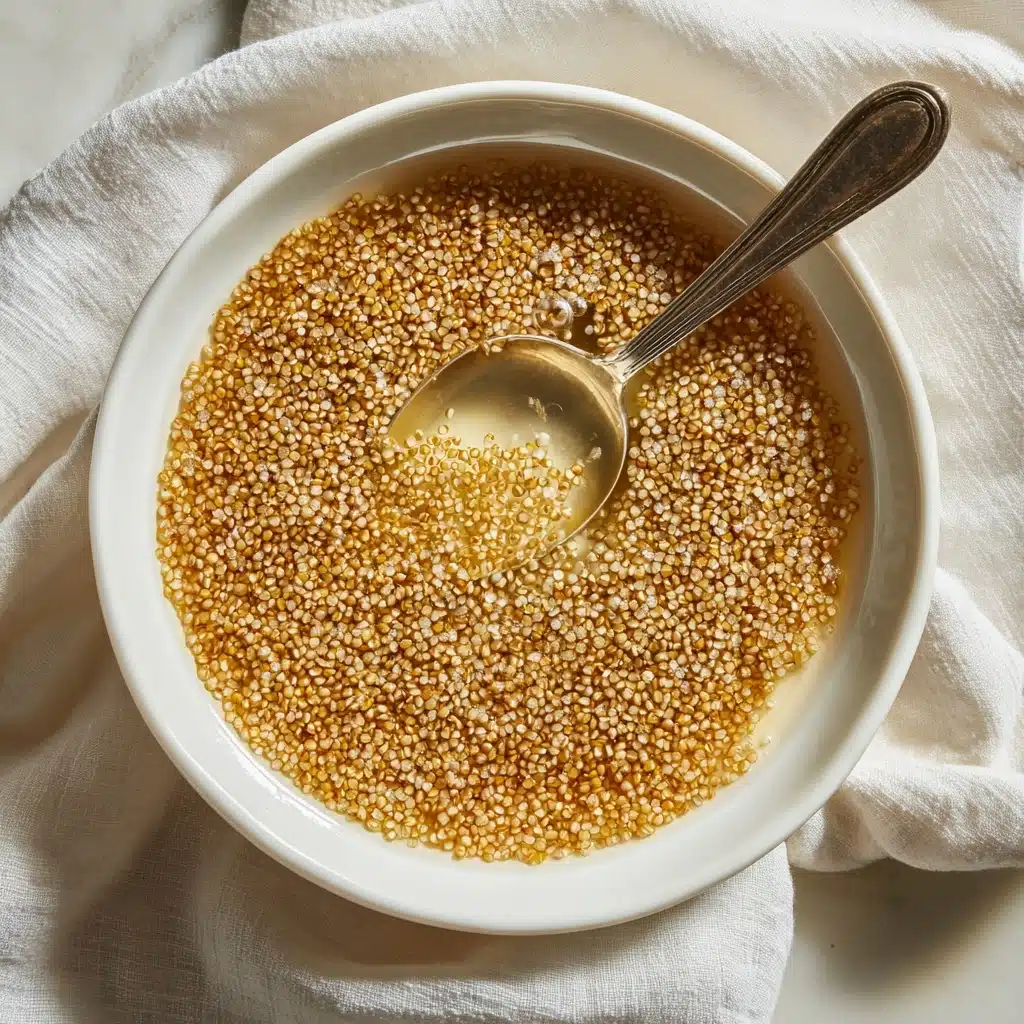
Garnishes
Spark a little creativity with garnishes! A sprinkle of toasted seeds, a handful of fresh herbs, or even a dusting of citrus zest can elevate soaking grains from basic to absolutely showstopping. Don’t forget a crack of black pepper or a drizzle of olive oil to finish.
Side Dishes
Soaking grains are endlessly versatile. Serve them alongside roasted veggies, grilled proteins, or add them to salads for a fiber boost. They’re delicious as a base for curries, stews, and stir-fries, craving all those big flavors and sauces you love.
Creative Ways to Present
Try layering soaking grains in jars with sautéed greens, crunchy nuts, and a tangy dressing for a portable lunch. Or, stuff them into bell peppers with a handful of cheese (dairy or non-dairy) and bake until golden. Kids love them stirred into soups or topped with fruit and honey for a sweet breakfast twist!
Make Ahead and Storage
Storing Leftovers
Once you’ve made soaking grains, you’ll be happy to know they store beautifully. Simply transfer cooled grains to an airtight container and keep in the fridge for up to four days. This makes meal prep a breeze—just scoop and serve as needed.
Freezing
If you want to soak in bulk, freezing is your friend! Drain and rinse your soaking grains, then pack them into freezer-safe bags or containers. They’ll keep for up to three months—perfect for those busy weeks when you need a wholesome side dish in a snap.
Reheating
To reheat, sprinkle the chilled or frozen grains with a bit of water and gently warm them in the microwave or on the stovetop. Stir occasionally to prevent sticking. They’ll be fluffy and fresh-tasting, just like the day you soaked them.
FAQs
Can I soak different kinds of grains together?
Absolutely! Mixing grains is a lovely way to get varied flavors and textures, but try to pair grains with similar soaking times and sizes for the best results. If you’re using both delicate and sturdier grains, keep an eye on the softer ones to make sure they don’t get too mushy during the soaking grains process.
Do I have to use an acidic medium, or can I skip it?
For maximum nutrient boost, it’s best not to skip the acidic medium. It helps break down phytic acid present in grains, making minerals more available for absorption (and giving your soaking grains extra digestibility).
Is it safe to leave grains soaking at room temperature?
Yes, it’s perfectly safe to soak grains on the counter for 8–12 hours, especially if you use an acidic medium. Just remember to loosely cover them and avoid direct sunlight or excessive heat.
Will soaking affect the taste of the grains?
Soaking grains actually brings out a gentler, slightly sweeter flavor and makes the texture fluffier than non-soaked grains. And don’t worry—the acidic medium is rinsed away before cooking, so it won’t leave a tang.
Can I use this method for all grains, including gluten-free ones?
Definitely! This soaking grains technique works beautifully on gluten-free grains like quinoa, amaranth, and rice, as well as traditional grains. Just adjust soaking time for smaller or more fragile varieties as needed.
Final Thoughts
Once you experience the lightness and flavor that comes from soaking grains, you’ll never look back. This easy technique is the secret ingredient to making everyday grains extraordinary—give it a try, and watch your meals and your energy soar!
Print
Soaking Grains Recipe
- Total Time: 5 minutes plus 8-12 hours soaking
- Yield: 2 cups soaked grains 1x
- Diet: Vegan, Gluten-Free (if using gluten-free grains)
Description
Learn how to properly soak whole grains for improved nutrient absorption and reduced cooking time with this simple method using common kitchen ingredients.
Ingredients
Whole Grains:
- 2 cups whole grains (such as oats, quinoa, rice, or wheat berries)
Filtered Water:
- 4 cups filtered water
Acidic Medium:
- 2 tablespoons acidic medium (such as apple cider vinegar, lemon juice, or plain yogurt)
Instructions
- Prepare Grains: Place the grains in a large bowl and cover with filtered water.
- Add Acidic Medium: Stir in the acidic medium to aid in the soaking process.
- Soak: Cover the bowl and let the grains soak for 8-12 hours or overnight.
- Drain and Rinse: Before cooking, drain and rinse the grains thoroughly.
Notes
- Soaking helps improve nutrient absorption and reduces cooking time.
- Adjust soaking time for delicate grains.
- Prep Time: 5 minutes
- Cook Time: 0 minutes (plus cooking after soaking)
- Category: How-To
- Method: Soaking
- Cuisine: Traditional
Nutrition
- Serving Size: 1 cup cooked grains
- Calories: 180
- Sugar: 0g
- Sodium: 5mg
- Fat: 1g
- Saturated Fat: 0g
- Unsaturated Fat: 1g
- Trans Fat: 0g
- Carbohydrates: 38g
- Fiber: 4g
- Protein: 6g
- Cholesterol: 0mg
